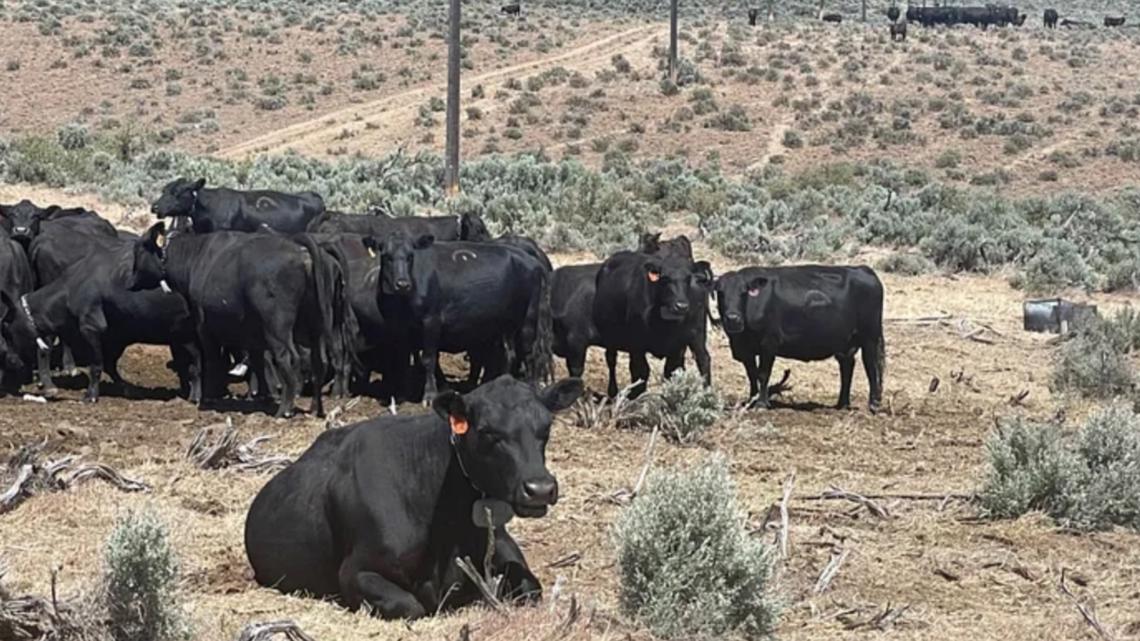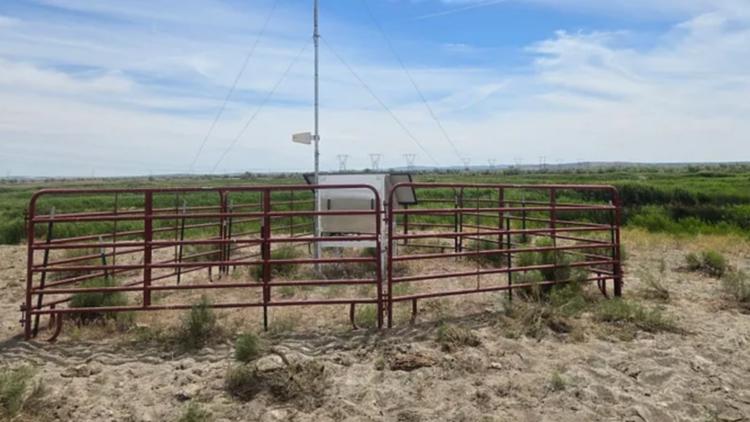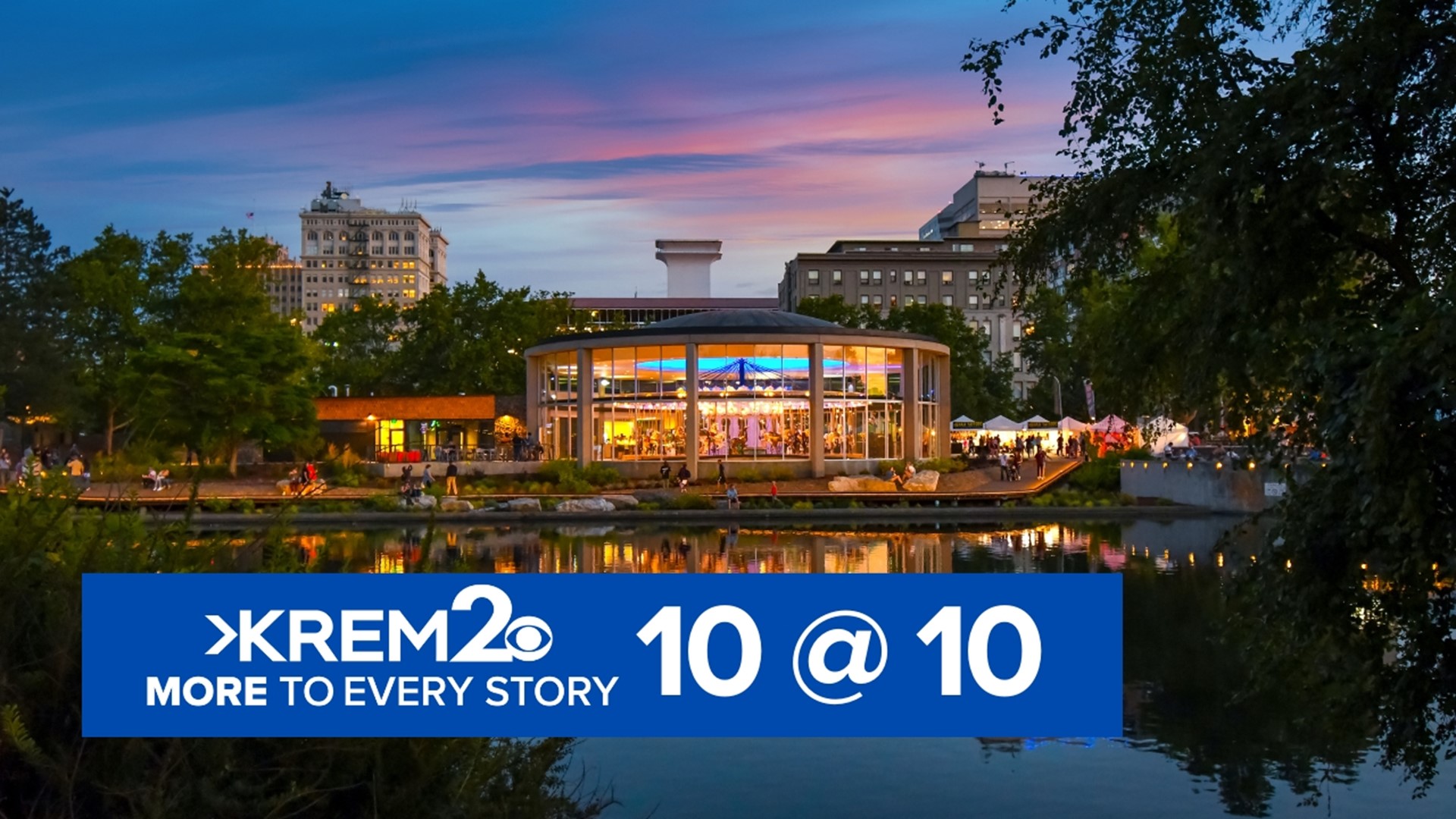GRANT COUNTY, Wash. — Ranching plays an essential role in many communities across Washington. It drives local economies, structures growth and land management practices, and impacts local government decisions. These communities supply livestock and agricultural products essential to Washington residents, thereby influencing state policies as well. The Department is committed to maintaining a working landscape on our wildlife areas that aligns with local community values if the land’s ecological integrity is preserved.
In central Washington, the Washington Department of Fish and Wildlife (WDFW) and permittees have partnered — with financial assistance from the U.S. Bureau of Reclamation (USBR) — to use virtual fencing technology to improve grazing management. This cutting-edge approach is currently being tested on the Columbia Basin Wildlife Area in Grant County, the first implementation of virtual fencing on a wildlife area in Washington State. This effort is intended to reduce invasive, tall-emergent vegetation such as common reed (Phragmites australis) and open shoreline habitats to benefit waterfowl by promoting short-emergent, seed-producing annuals. These annuals provide food and loafing areas for ducks and geese at all life stages, especially the brood-rearing stage.
Virtual fencing involves the use of solar-powered towers and GPS-equipped collars for cattle. These towers, with a 20-foot-tall antenna, communicate with the collars to track and manage livestock locations. Despite their small size, these towers have significant range, at times over 7 miles in a line of sight depending on the terrain, with ridges and valleys affecting coverage.
Virtual fencing allows for real-time cattle monitoring, ensuring that herds are kept within designated grazing areas, and can even be used to move cattle into or out of areas over time. This reduces the risk of overgrazing and protects sensitive areas, such as dense nesting cover which is critical to hen nest success for imperiled species like sage grouse, or burned areas that may need time to recover before grazing resumes.


Ranching and WDFW lands
WDFW has a long history of partnering with ranching families going back over a century and recognizes the importance of integrating livestock grazing with conservation goals to maintain a working landscape that supports both local communities and wildlife.
WDFW permits livestock grazing on WDFW-managed lands when it aligns with ecological objectives or the Department’s strategic plan. Each grazing permit is accompanied by a detailed management plan developed in collaboration with the producer. These plans outline protective measures, responsibilities, and monitoring protocols to ensure that grazing practices contribute positively to the health of the landscape.
Ecological Benefits of Grazing
- Habitat improvement: Strategically managed grazing can enhance habitat for wildlife. In the Columbia Basin, grazing can be a substitute for mowing, disking, and harrowing, which is used to balance successional wetland stages and promote moist soil seed production.
- Invasive species control: Grazing helps manage the height and spread of invasive plant species such as common reed or reed canary grass, making wetlands more suitable for waterfowl and shorebirds.
- Landscape connectivity: Grazing can help maintain open spaces, preventing land from being developed for non-conservation purposes. This open landscape is crucial for wildlife movement and habitat connectivity.
To ensure that grazing remains beneficial, WDFW staff continuously monitor grazing leases. They assess compliance with management plans and implement adaptive strategies as needed to address emerging challenges. This approach ensures that grazing contributes to, rather than detracts from, the ecological integrity of the land.
The integration of virtual fencing, and other options including wildlife-friendly fencing and strategic grazing management — like deferred grazing to give the land time to recover after fire — offers a promising path forward for sustainable ranching.
- Virtual fencing provides improved control over livestock use areas, preventing overgrazing and promoting soil health, while well-managed grazing practices support wildlife habitats, contribute to integrated pest management, and maintain open landscapes.
- Wildlife-friendly fencing is fencing that keeps livestock in but allows other species to move through the landscape unharmed. WDFW provides the wildlife-friendly fencing alternative to land managers through the Washington Shrubsteppe Restoration and Resiliency Initiative (WSRRI).
- Deferred grazing can be a good option to move livestock from an area that was recently burned and needs time to recover before grazing can resume, but often this is an expensive alternative. WSRRI provides resources such as pasture rental support and hay to lessen the impacts and costs of deferred grazing.
By utilizing these innovations, land managers can create a balanced approach to land use that supports both agricultural productivity and ecological preservation. As virtual fencing pilot projects like the one in the Columbia Basin Wildlife Area demonstrate their effectiveness, they pave the way for broader adoption and a more sustainable future for ranching in Washington and beyond.
Learn more about how WDFW manages grazing on WDFW lands by reading this story map.
Visit Conservation Northwest for information on virtual fencing.
WSRRI is a collaborative initiative with WDFW, The Washington State Conservation Commission (SCC) and The Department of Natural Resources (DNR).
This story was originally posted on Washington Department of Fish and Wildlife's blog.



